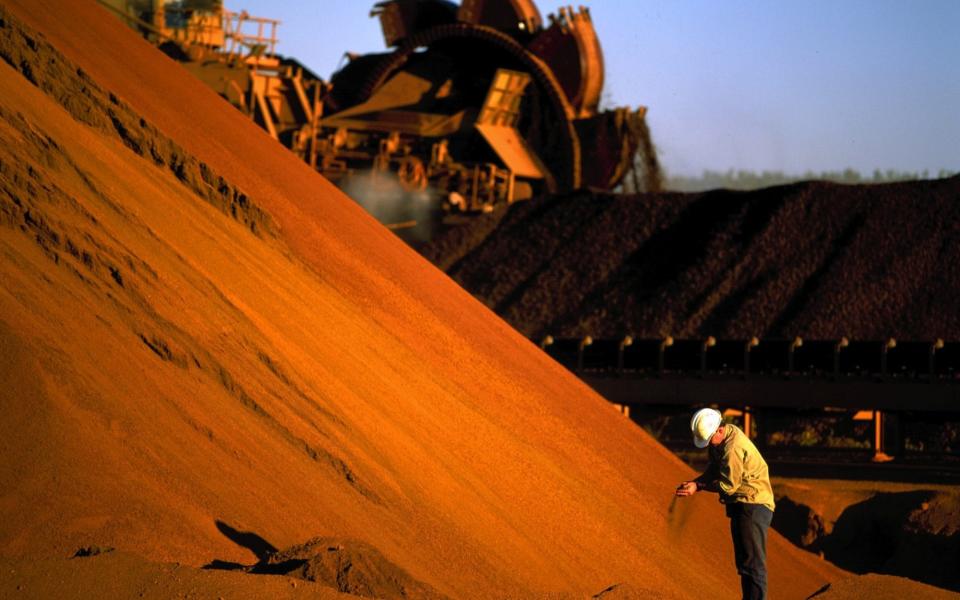This miner has lost 18pc since we told you to avoid it – now it's time to buy back in

Ask a group of investors to define risk and many will probably say it is the threat of a permanent loss of capital.
It is therefore somewhat surprising that investors often become fearful when stock markets turn volatile. After all, there is a great difference between volatility and a permanent loss of capital.
High volatility means large share price fluctuations in a short space of time and does not necessarily equate to a greater risk of permanent loss. Diversified portfolios invested in companies with strong balance sheets are extremely likely to survive, and fully recover from, heightened stock market volatility.
In fact, such periods provide an opportunity to buy financially sound companies at low prices. They can subsequently benefit from the stock market’s stunning track record of recovery. Investors who shun shares during volatile periods in a bid to avoid risk may therefore impair their portfolio’s long-term growth potential.
In Questor’s view, now is a far better time to buy shares than the start of the year because financially sound companies such as the miner Rio Tinto trade at more attractive prices.
Its shares have fallen by 18pc, and underperformed the FTSE 100 by 21 percentage points, since this column advised readers to avoid them a year ago.
They may be highly volatile in the short run, but are extremely unlikely to deliver a permanent loss of capital thanks to the company’s solid balance sheet. Its net cash of £1.3bn puts it in a strong position in an era of rising interest rates. Low debt means that net finance costs were covered 172 times in the last financial year. This provides an exceptionally wide safety margin should a challenging economic outlook hit short-term profits.
Over the longer term Rio has high growth potential as the world shifts to a net zero economy. Demand for the iron ore, copper, lithium and aluminium it produces is likely to rise as renewable energy infrastructure and electric vehicles gradually supersede their fossil fuel equivalents.
Demand for lithium is forecast to rise by 25pc-35pc a year over the next decade, while four times as much copper is used in electric vehicles as in those with internal combustion engines. This seems likely to lead to price rises as demand growth outstrips available supply.
Urbanisation is another key trend that could further boost the company’s financial performance. By 2050 the world’s urban population is forecast to double. This will require major infrastructure investment and in turn further demand for commodities. A lack of realistic alternatives to iron ore and copper means that, in many cases, any consequent increase in their costs could contribute to a higher rate of inflation.
Clearly, Rio Tinto’s shares have not kept pace with the cost of living over recent months. But the long-term record of commodity prices during periods of high inflation is relatively positive.
Encouragingly, the company has paid a rising dividend over recent years and in 2021 its dividend equated to a yield of 18pc. While mining sector payouts are notoriously unstable, Rio Tinto is nevertheless currently forecast to pay dividends that total a third of its present share price over the next three financial years. Alongside a forecast price-to-earnings ratio of about 5, this suggests its shares are extremely cheap.
The company does remain highly dependent on iron ore – it contributed 59pc of revenues last year – although efforts are being made to diversify Rio’s operations. For example, it recently acquired a lithium project and is seeking to buy the remaining half of a major copper resource. Further information on its progress and broader operational activity is due on Friday.
In the short run, Rio Tinto’s shares are likely to be highly volatile, thanks largely to economic uncertainty. But this should not dissuade investors from buying them. The company’s sound balance sheet means the threat of a permanent loss of capital is low. Its capacity to make further acquisitions, strong long-term growth potential and low valuation cement its investment appeal.
Questor says: buy
Ticker: RIO
Share price at close: £48.35
Read the latest Questor column on telegraph.co.uk every Sunday, Tuesday, Wednesday, Thursday and Friday from 5am.
Read Questor’s rules of investment before you follow our tips.

 Yahoo Finance
Yahoo Finance 